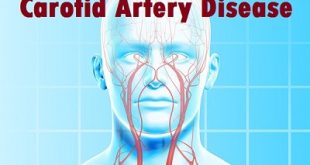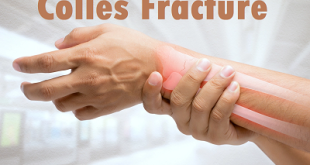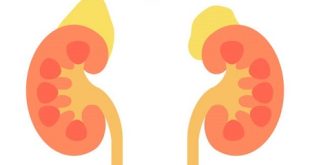Definition
Claudication is the crampy pain in patient’s legs with peripheral arterial disease. It often develops after walking a certain distance. The pain usually resolves with rest and is predictable. Patients tend to have this pain after walking a certain distance and they adjust their lives accordingly. The pain can be severe but it will go away after resting just a few minutes.
Claudication happens because the arteries of the leg are so narrow that when the leg needs more blood for exercise, there just isn’t a wide enough passage for blood to go through. This causes a shortage of blood delivery which is painful. In most cases, patients don’t have pain without activity. When they walk, more blood is required to deliver oxygen to the tissues. Their narrowed vessels are unable to deliver the required blood flow and pain ensues. This is claudication. When activity stops, blood is again delivered in adequate amounts to the tissues and the pain goes away.
Claudication generally occurs when walking the same distance. With progression of vessel disease, the initial claudication distance (that distance at which a person first experiences pain when walking) may decrease or the person may no longer be able to walk.
Risk factors
Risk factors for claudication are the same as those for atherosclerosis:
- Age
- Smoking
- Diabetes
- Being overweight or obese
- Sedentary lifestyle
- High cholesterol
- High blood pressure (hypertension)
- Family history of atherosclerosis or claudication
Causes of Claudication
- Claudication is most often a symptom of peripheral artery disease. The peripheral arteries are the large vessels that deliver blood to the network of vessels in your legs and arms.
- Peripheral artery disease is damage to an artery that restricts the flow of blood in an arm or leg (a limb). When you’re at rest, the limited blood flow is generally still enough. When you’re active, however, the muscles aren’t getting enough oxygen and nutrients to work well and remain healthy.
- Damage to peripheral arteries is usually caused by This is the build-up of cholesterol and other fats, blood cells, and other cellular debris into abnormal structures (plaques) on the lining of an artery.
- Plaques cause a narrowing and stiffening of the artery, limiting the flow of blood. If the plaques rupture, a blood clot can form, further reducing blood flow.
Claudication Symptoms
The pain of claudication most often occurs in the calf, but it also can occur in your hips, buttocks, thighs, knees, shins, or upper feet. While rare, it also can occur in your arms. In addition:
- You may not always feel pain; instead you may feel a tightness, heaviness, cramping, or weakness in your legs
- Claudication often occurs more quickly if you walk uphill or up a flight of stairs, or faster than usual
- Over time, if your PAD worsens, you may begin to feel claudication when you walk increasingly shorter distances
- While claudication is usually relieved with rest, as peripheral artery disease progresses, you may start to feel leg pain even when you are sitting or lying down
- If blood flow to your legs is drastically reduced, your toes may look bluish or feel cold. Skin ulcers (sores) may also develop.
Left untreated, claudication can affect your quality of life, limiting your ability to take part in social activities, to exercise, or even work. It can also lead to potentially life-threatening complications. So, it’s important to tell your doctor if you have pain in your legs (or arms) when you exercise.
Claudication Complications
Severe, usually long term cases of claudication can cause serious complications, including:
- Constant pain
- Difficulty walking, exercising, or doing everyday activities
- Slow healing skin sores and wounds
- Chronically cold and darkened skin
- Hair loss
- Impotence
- Severe skin infections, such as gangrene
In rare cases, people with severe or untreated claudication or infections may also experience:
- Amputation
- Permanent disability
- Heart attack
- Stroke
Diagnosis and test
Claudication may go undiagnosed because many people consider the pain to be an unwelcome but typical part of aging. Some people simply reduce their activity level to avoid the pain.
A diagnosis of claudication and peripheral artery disease is based on a review of your symptoms, a physical exam, evaluation of the skin on your affected limbs, and tests to check blood flow.
Some common tests used to diagnose claudication may include:
- Pulse measurement in your palms or feet to assess blood flow to the entire limb
- Ankle-brachial index, a comparison of blood pressure in your ankles with the blood pressure in your arms
- Segmental blood pressure measurement, a series of blood pressure measurements at different areas on your arm or leg to help determine the amount and location of arterial damage
- Exercise testing to determine the maximum distance you can walk or the maximum exertion without pain
- Doppler ultrasound to see the flow of blood
- Magnetic resonance imaging (MRI) or computerized tomography (CT) angiography to look for narrowed blood vessels
Treatment and medications
Treatment for claudication is focused on managing risk factors and treating pain. Claudication treatment can include:
Lifestyle Changes
Watch what you eat, get regular exercise, maintain a healthy weight and quit smoking.
Medications
If you have high blood pressure, high cholesterol or diabetes, be certain to take your prescribed medications as directed. Your doctor may also prescribe medication to treat leg pain, improve blood flow or to reduce the chance of blood clots.
Surgery
Surgical treatments may be recommended to improve blood flow and can include:
Angioplasty and stenting: A small balloon is inserted to widen narrowed or blocked blood vessels and improve blood flow. A vascular surgeon sometimes inserts a stent, a tiny metal mesh tube, to support artery walls and keep blood vessels wide open.
Atherectomy: This procedure, similar to angioplasty, removes plaque that blocks arteries to improve blood flow. During this procedure, a thin tube (catheter) is inserted into a vein or artery via a small incision in the arm, neck or groin. The catheter is carefully threaded into the blocked artery. The tip of the catheter removes the plaque and collects it. When the catheter is removed, the plaque comes with it.
Bypass grafting: This surgery creates a bypass around narrowed arteries to improve blood flow, by grafting arteries or veins taken from other parts of the body.
Prevention of Claudication
Some of the risk factors for claudication are behaviors that can be modified such as:
- Quit smoking,
- Managing diabetes and high blood pressure, and
- Maintaining a healthy diet to keep cholesterol levels normal.
Medications that help thin the blood can be used to help prevent symptoms of claudication, but they do not treat the underlying cause. Medications include:
- Aspirin,
- Clopidogrel (Plavix),
- Ticlopidine (Ticlid), and
- Dipyridamole (Permole, Persantine, Aggrenox).
Exercise is recommended for patients with claudication symptoms. Frequent exercise, especially walking, greatly reduces symptoms and increases symptom-free walking distance and is one of the most effective preventive measures.
 Diseases Treatments Dictionary This is complete solution to read all diseases treatments Which covers Prevention, Causes, Symptoms, Medical Terms, Drugs, Prescription, Natural Remedies with cures and Treatments. Most of the common diseases were listed in names, split with categories.
Diseases Treatments Dictionary This is complete solution to read all diseases treatments Which covers Prevention, Causes, Symptoms, Medical Terms, Drugs, Prescription, Natural Remedies with cures and Treatments. Most of the common diseases were listed in names, split with categories.








It’s quite educational, for about a week now I started having muscle pain on my both thighs, do I go by your drugs prescription or do I see my doctor ?
Please consult a doctor to get the prescribed medicines.